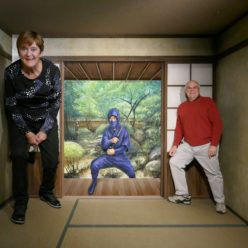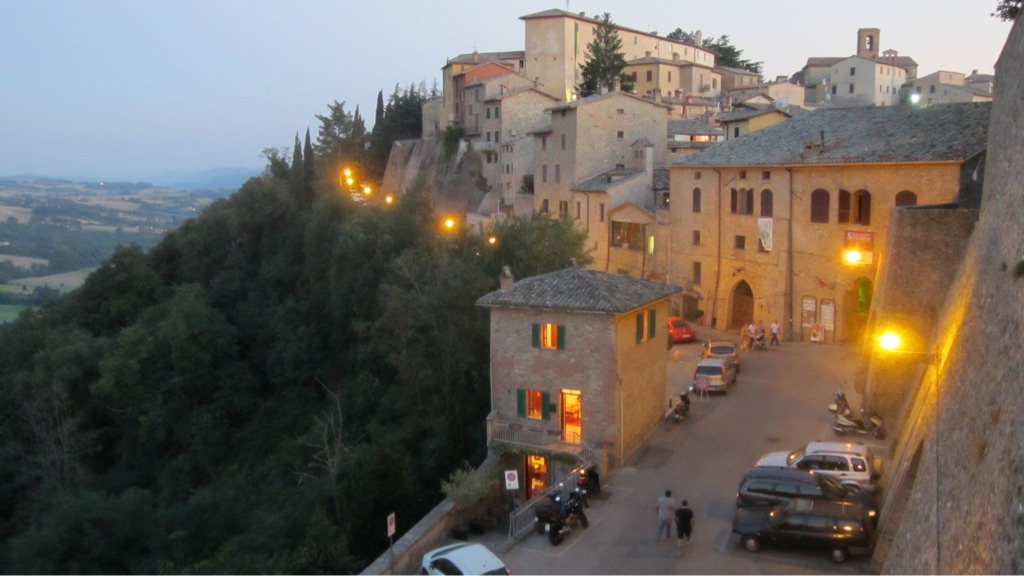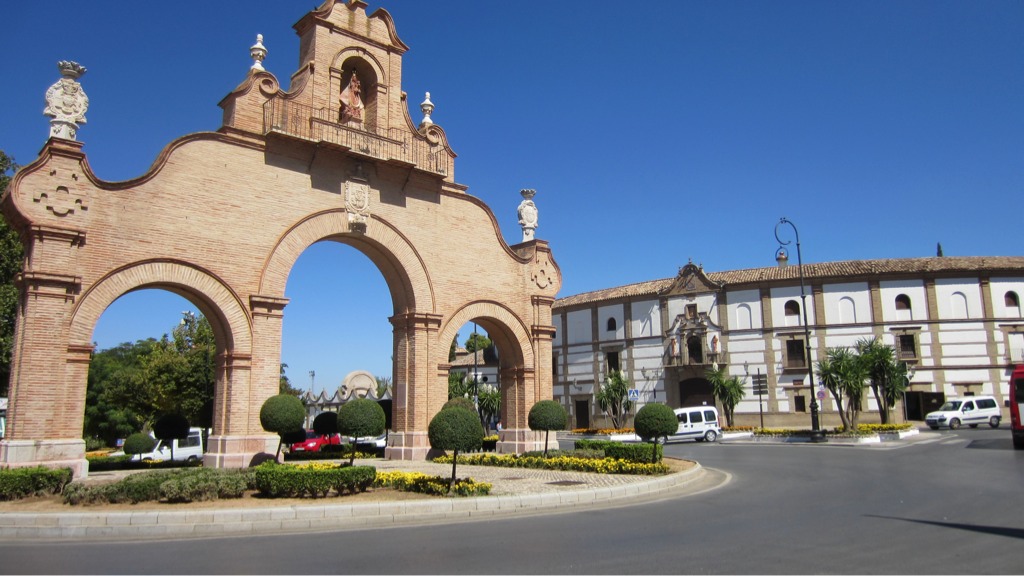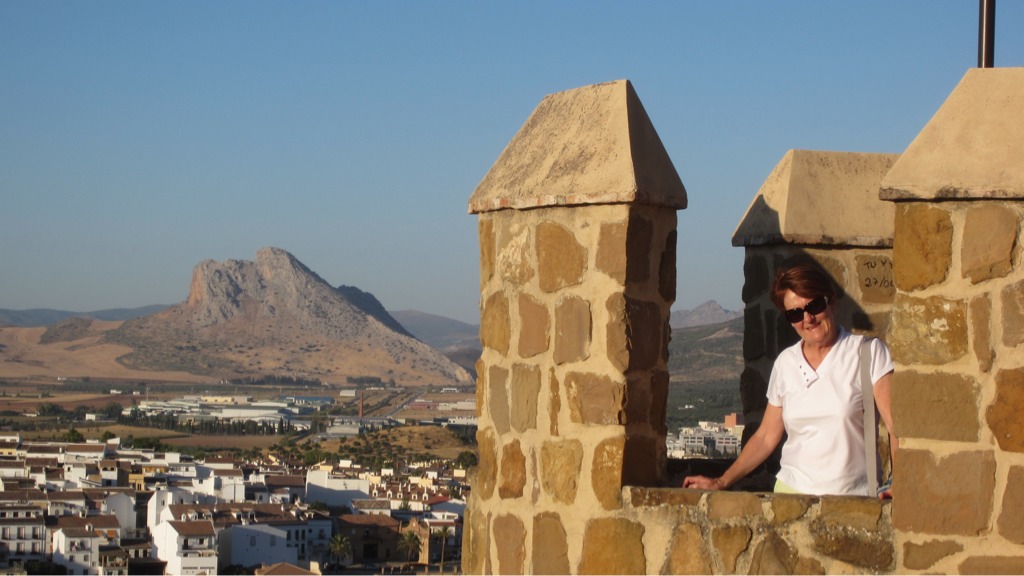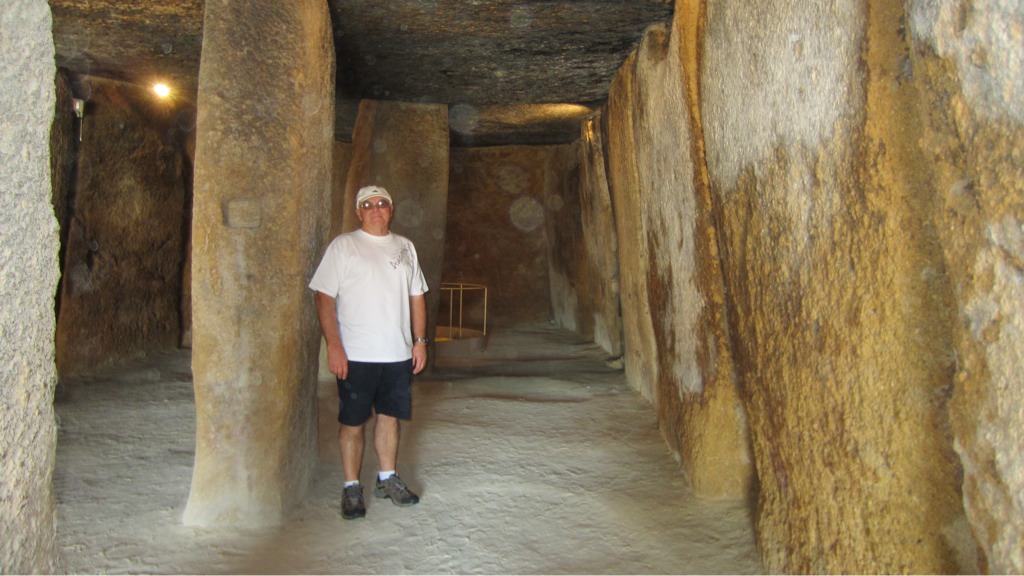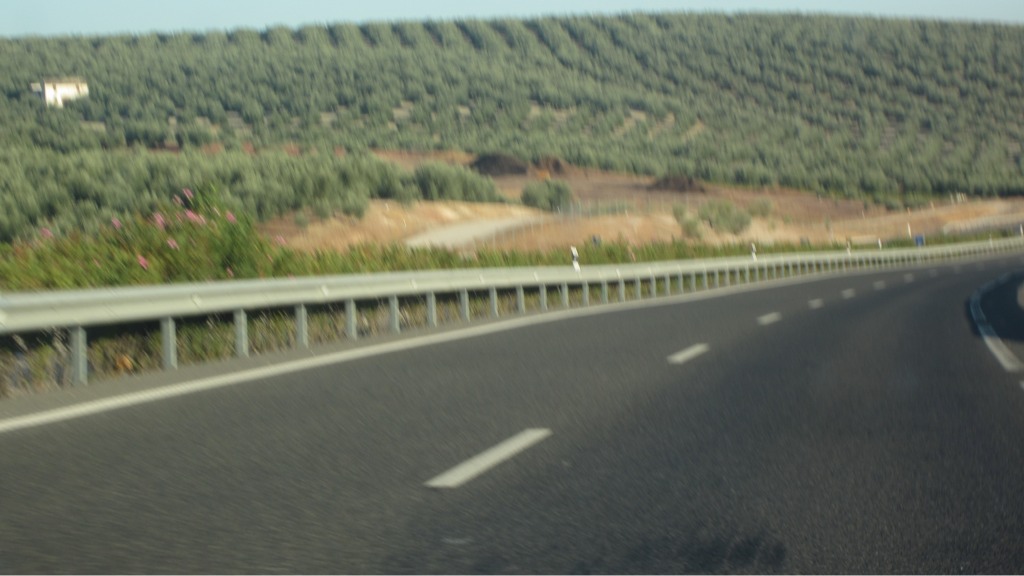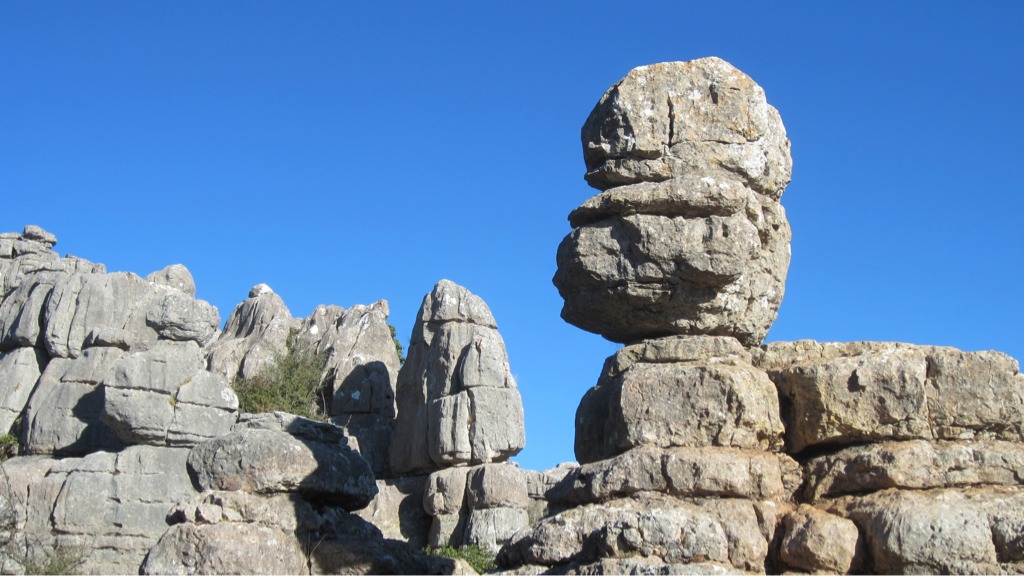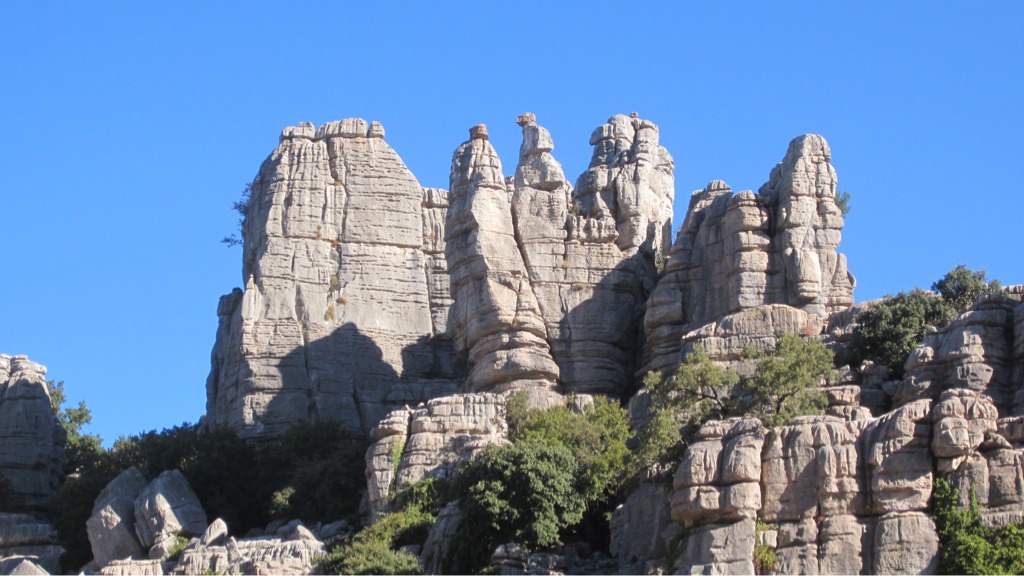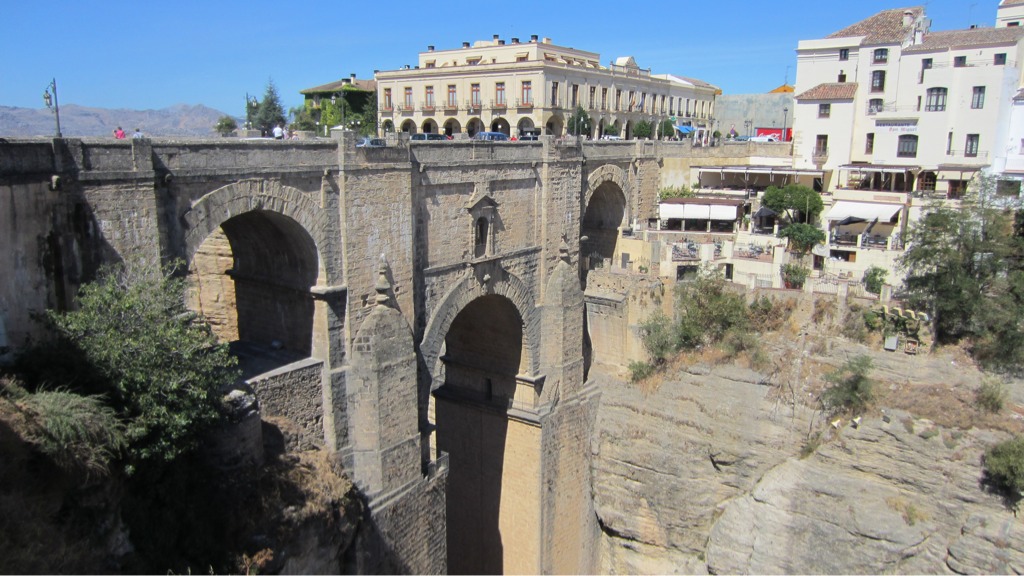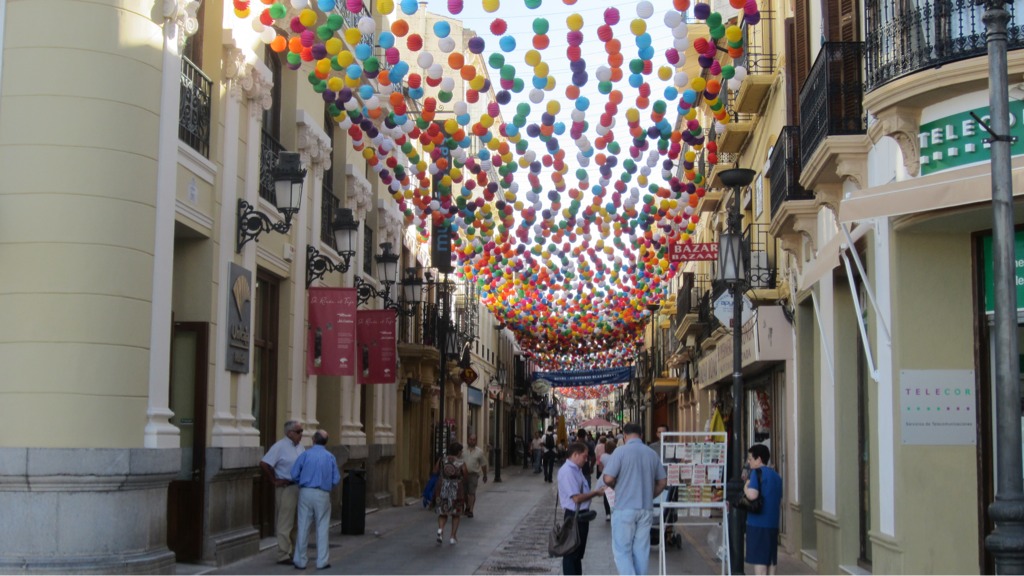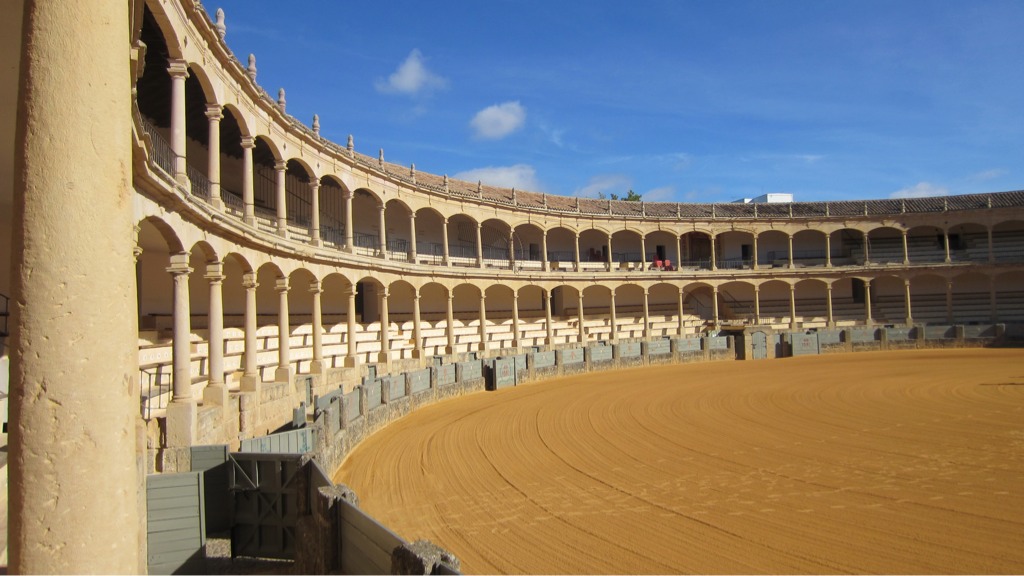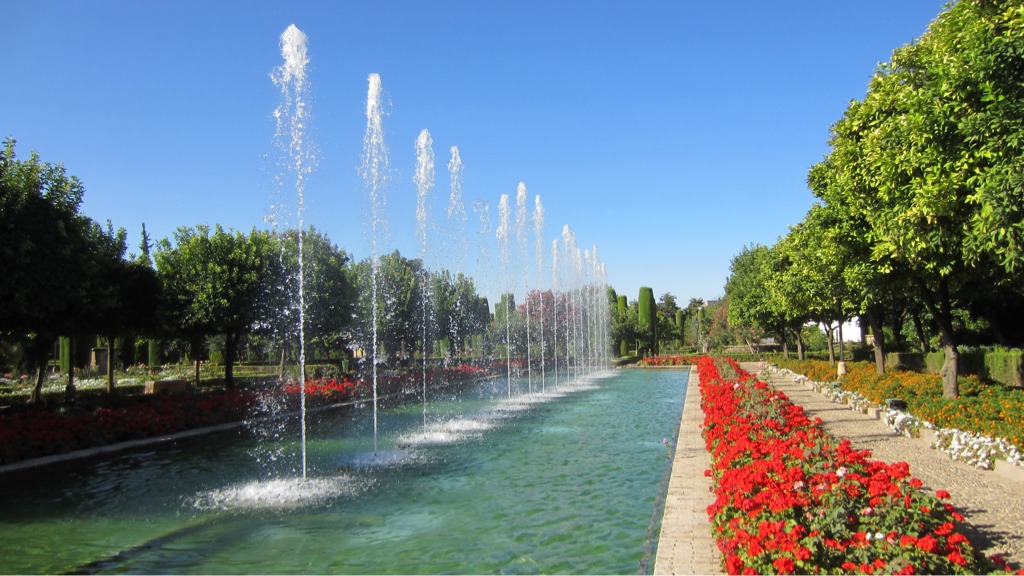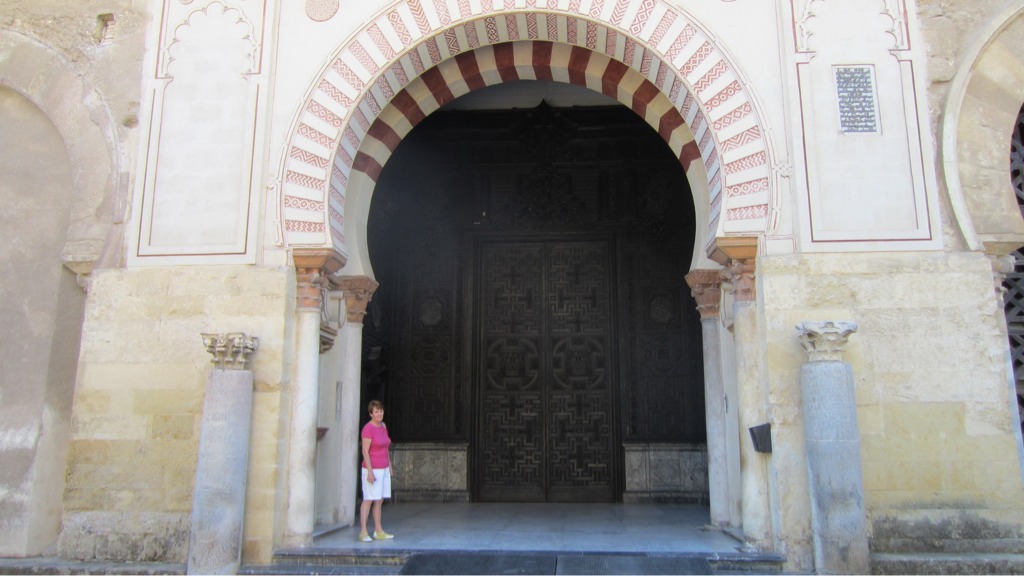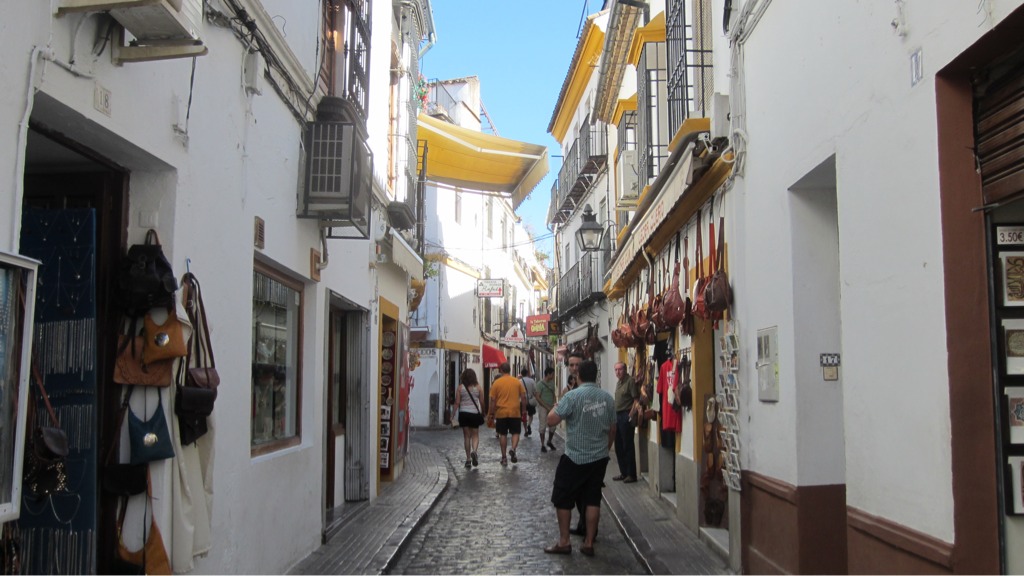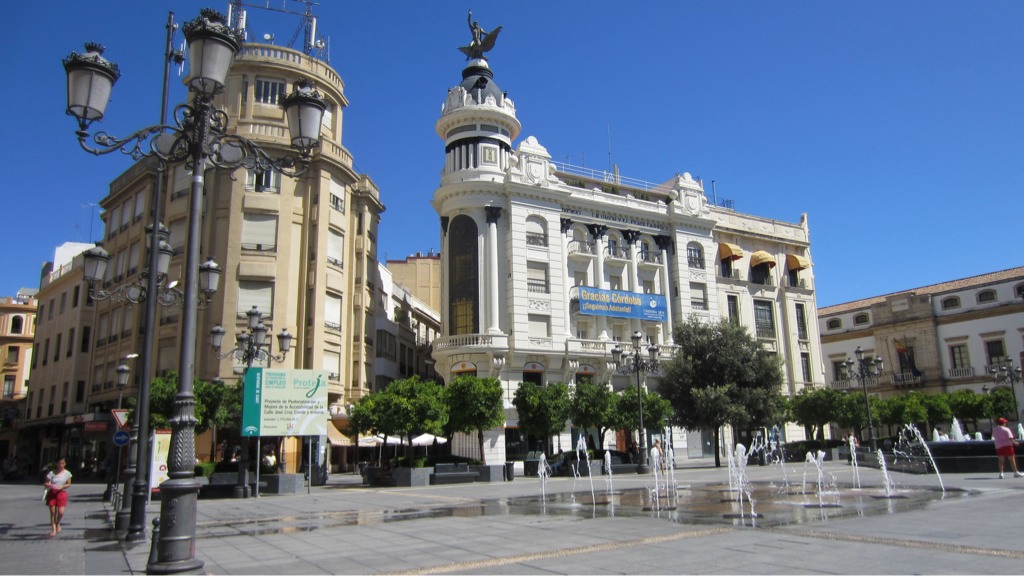What A Setting For Dinner …
We decided we needed to catch our breath and spend a rest day in Antequera. A casual morning in our local bar drinking coffee and catching up on emails, an afternoon siesta and a swim in our pool and we were ready to venture out for a nice dinner. The owners of our villa recommended a restaurant with a traditional Spanish menu and a fantastic outlook. With a balmy 20 oC and a light breeze, we enjoyed a romantic dinner in this beautiful setting outside the Church of the Santa Maria la Mayor.
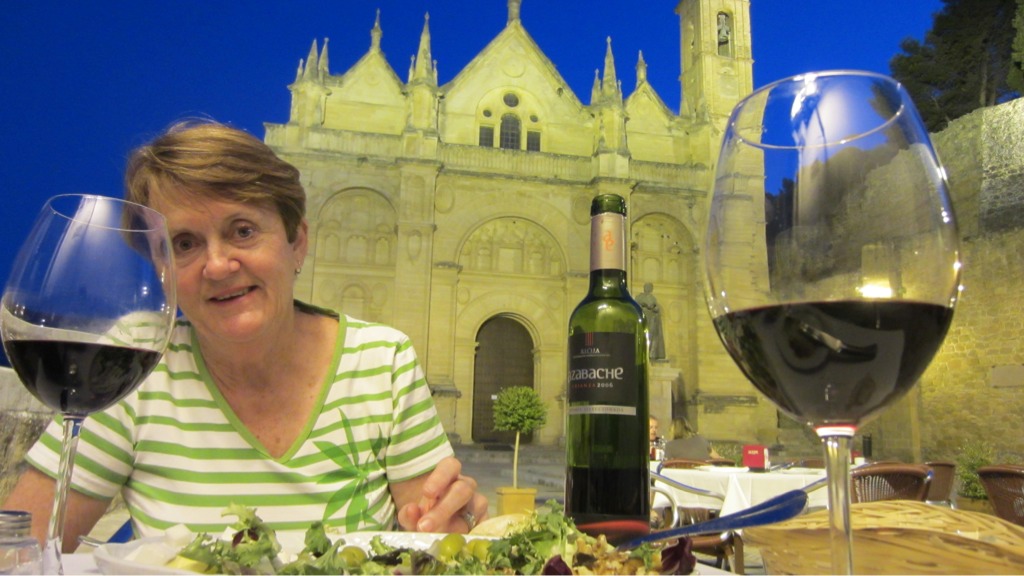
A Romantic Dinner in Antequera
Granada …
After a rest day in Antequera it was off to Granada for two days with the key objective of visiting the Alhambra. Construction of the Alhambra commenced in 1237 by Muhammad I al-Ahmar and continued under Arab rule for 255 years until 1492 when the Alhambra was surrended to the Catholic monarchs. Construction during the early period was strictly to the Arab style of very plain exteriors to the buildings and palaces and extremely ornate interiors. From 1492 onwards construction was in the Spanish Renaissance style with strong ornate exteriors and plain interiors. It is this variation in styles and the sheer size of the complex that makes the Alhambra one of the most visited historical sites in Spain.
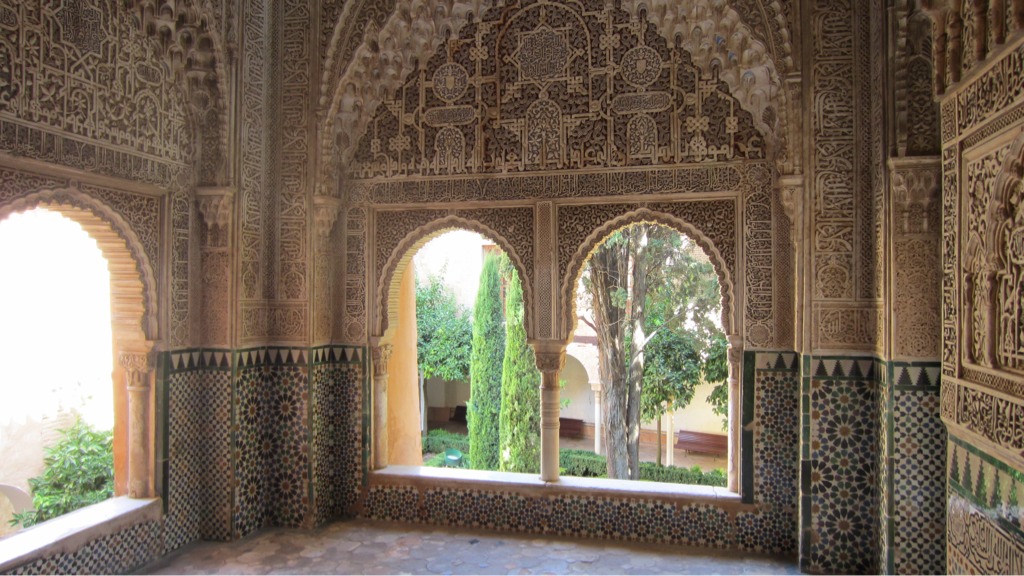
Ornate interior of the Comares Palace in the Arab section
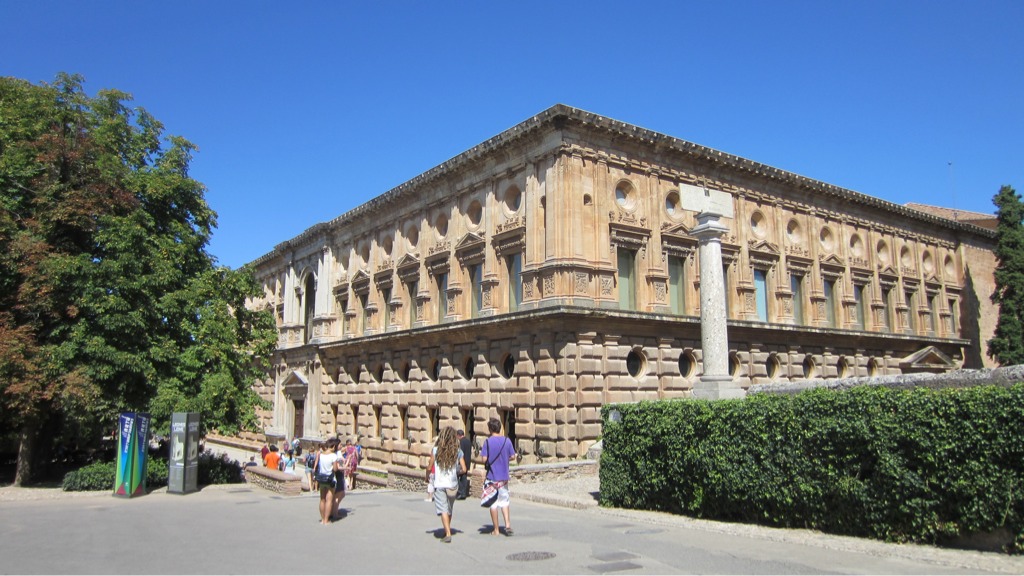
Contrasting style of the Charles V Palace built from 1526
Our second day in Granada was spent visiting the rest of the city including the Albaycin district (Jewish Quarter) with its rambling narrow cobbled streets and the downtown area where the Cathedral is the centre piece.
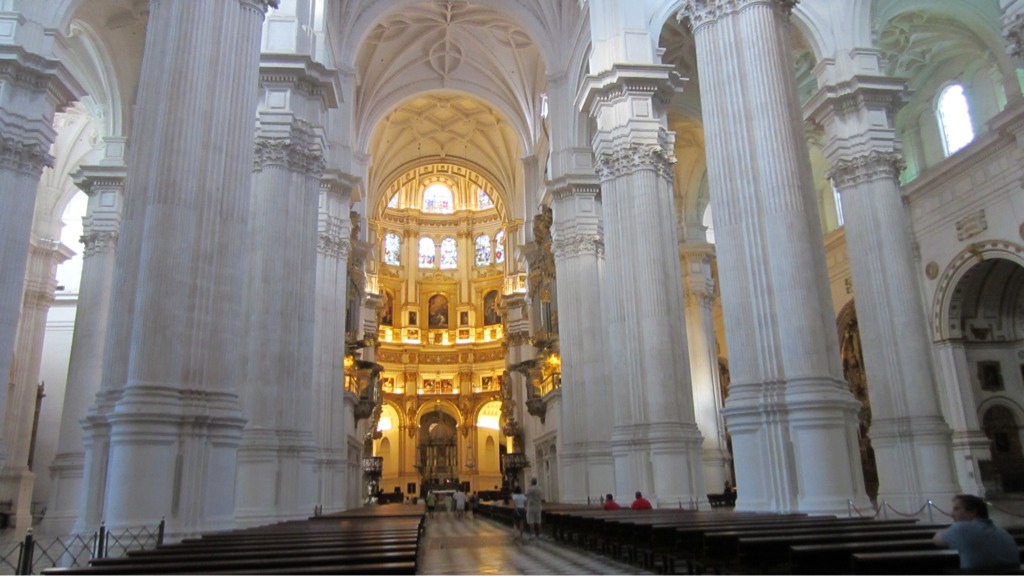
The amazing Granada Cathedral
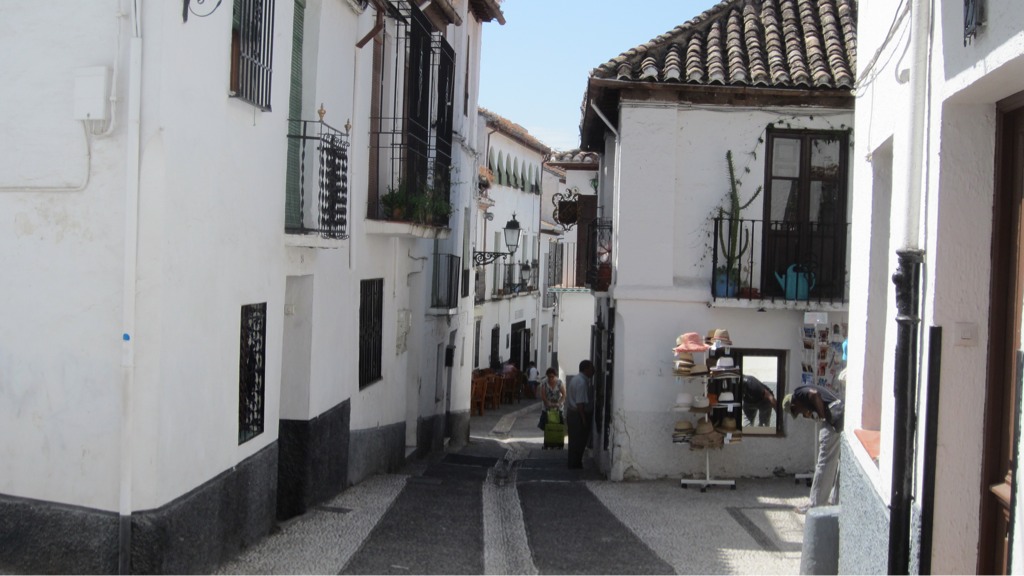
Albaycin District – Jewish Quarter Of Granada
Malaga – What a surprise …
We returned to our villa in Antequera for a well earned rest before our next adventure to the coast to the city of Malaga. This city took us by total surprise as we were of the impression it is more a commercial and industrial centre being the capital of Andalucia. It turns out that it is a beautiful city with lots of tourist attractions and probably the best tourist information we have seen in any city. Our starting point was coffee outside the house where Picasso was born followed by a visit to the Picasso Museum which we both really enjoyed.
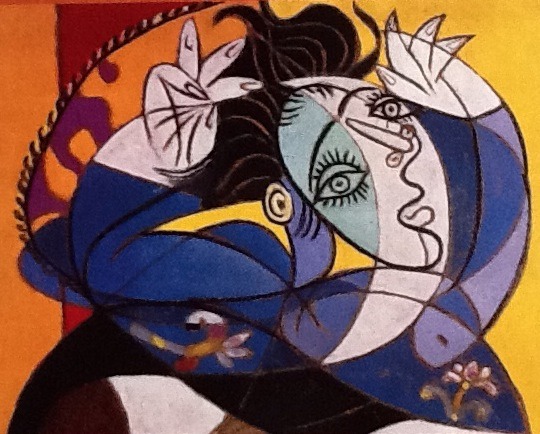
Woman with raised arms – Picasso 1936
Our next stop was to the Roman Theatre. This is another example of fantastic tourism with an ultra modern interperative centre that gives you a multi screen video presentation followed by touch screen images and text explaining how the Romans used their theatres for entertainment, meetings and political debates. You then went down a ramp into the theatre. All for free and with a really fun guide, who with broken English gave us an excellent explanation of the site and other tourist attractions in Malaga.
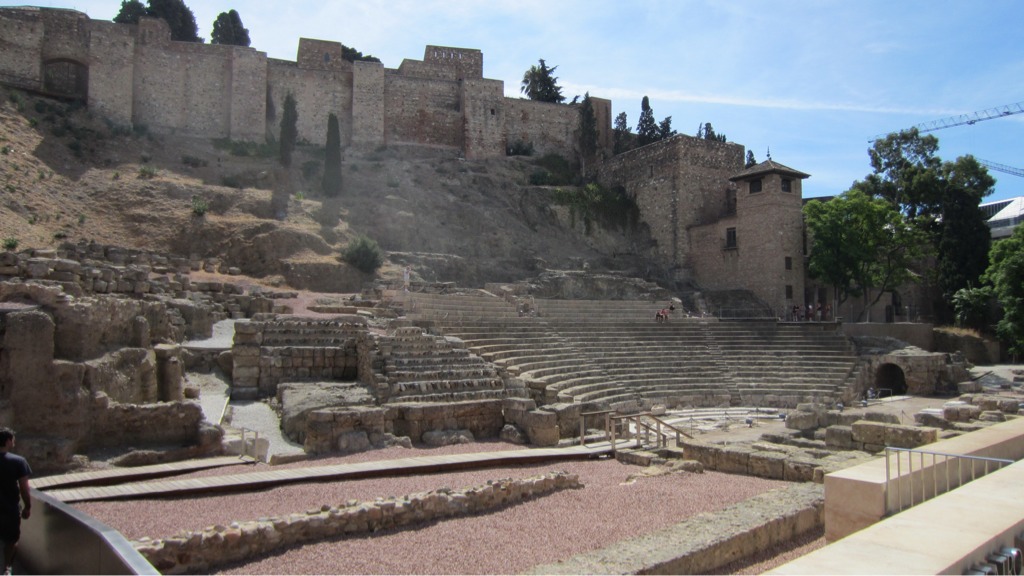
Roman Theatre with the Alcazab in the background
From the Roman Theatre it was off to the Muslim Alcazaba (fortress) of Malaga. Much smaller than the Alhambra in Ganada but many similarities as it was again built by the Arabs during the eleventh century.
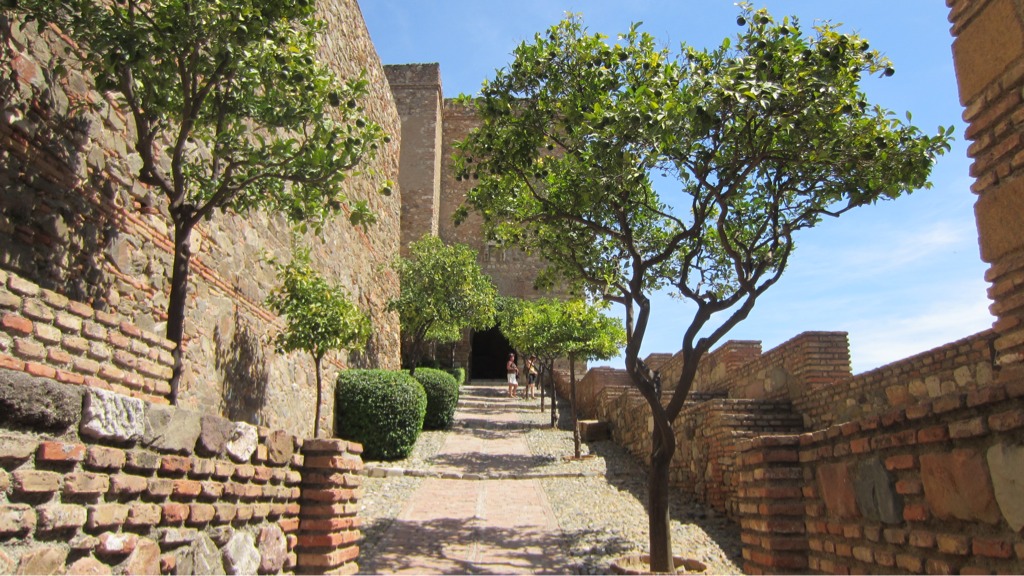
Steps leading up into the Alcazaba Palace
From the Alcazaba it was into the retail area of Malaga for lunch and a quick look around the shops. What a surprise this turned out to be as the marble paved streets with beautiful designer shops is equal to any in the world. Clearly this is a very wealthy city partly as it is the capital of Andalucia Province and also supported by tourism as many cruise boats dock here during cruises of the Mediteranean.
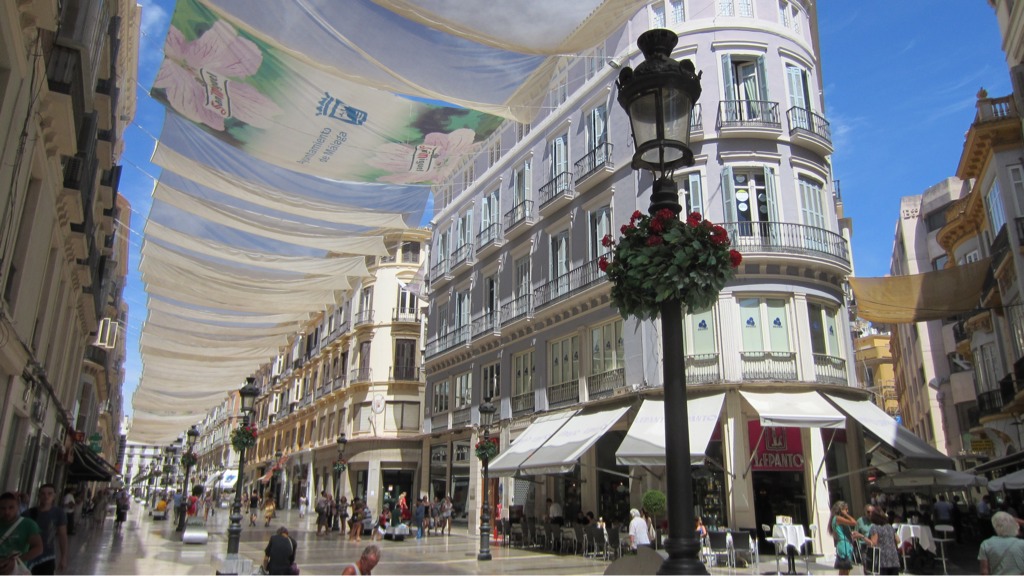
Calle Marques de Lanos in Malaga – The Main Shopping Street.
East Along The Coast …
From Malaga we decided on a drive along the coast road east to Nerja. This area is where a lot of the British head for holidays. It is densly packed with holiday apartments and very few car parks and would certainly not be our choice for a holiday, although it does have great weather. Nerja is a nice coastal town on the Mediterranean Sea. If we were heading for the coast for a Spanish holiday, I think this is where we would pick.
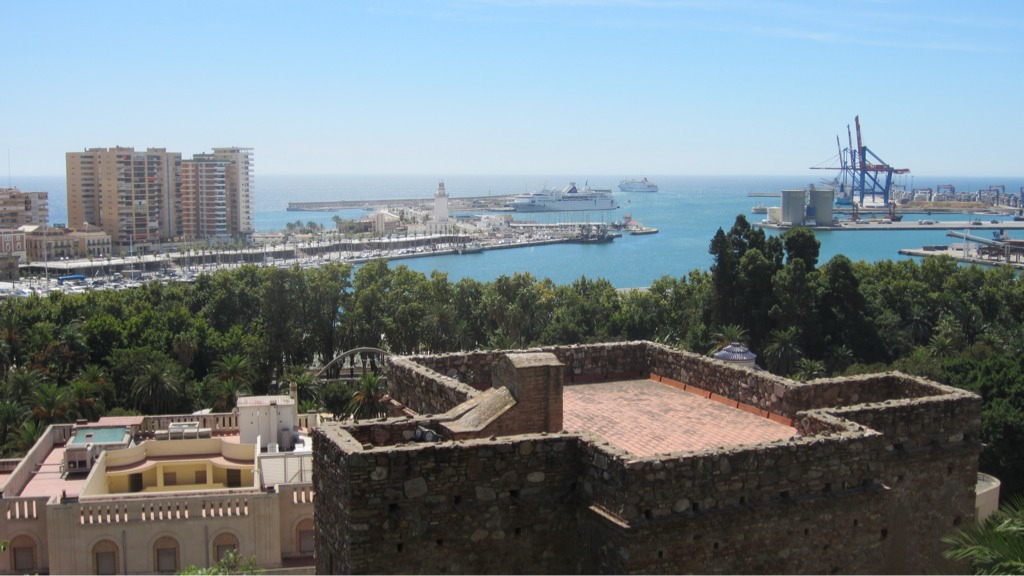
View of the Malaga Port from Alcazaba
Our Departure From Antequera …
With sadness we departed the beautiful city of Antequera. I have no doubt we will return one day for an extended stay as we really enjoyed the villa, the town and the spectacular countryside. It was also a great central location from which to explore many of the towns and cities in region.
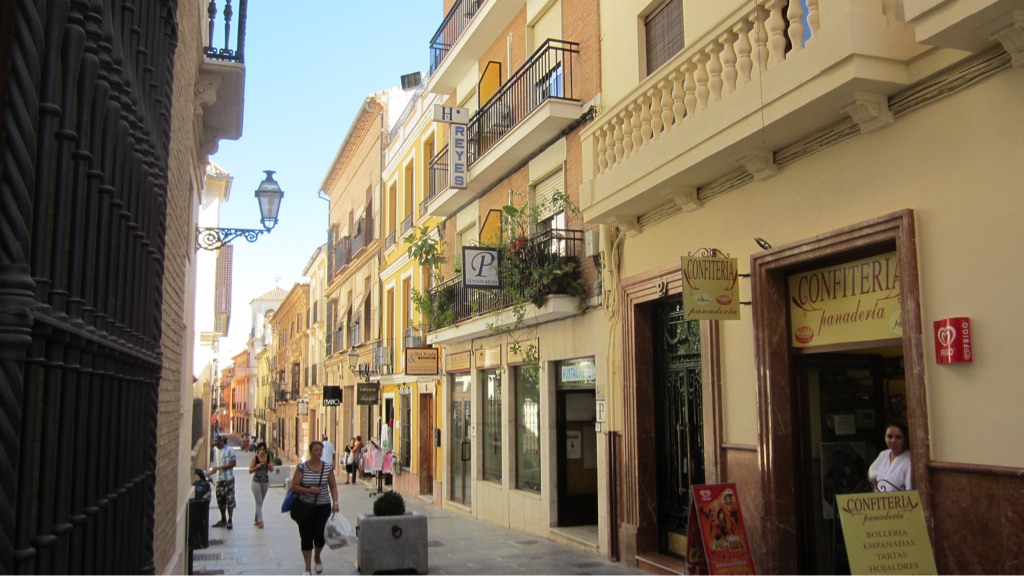
Central Antequera Shopping Precinct
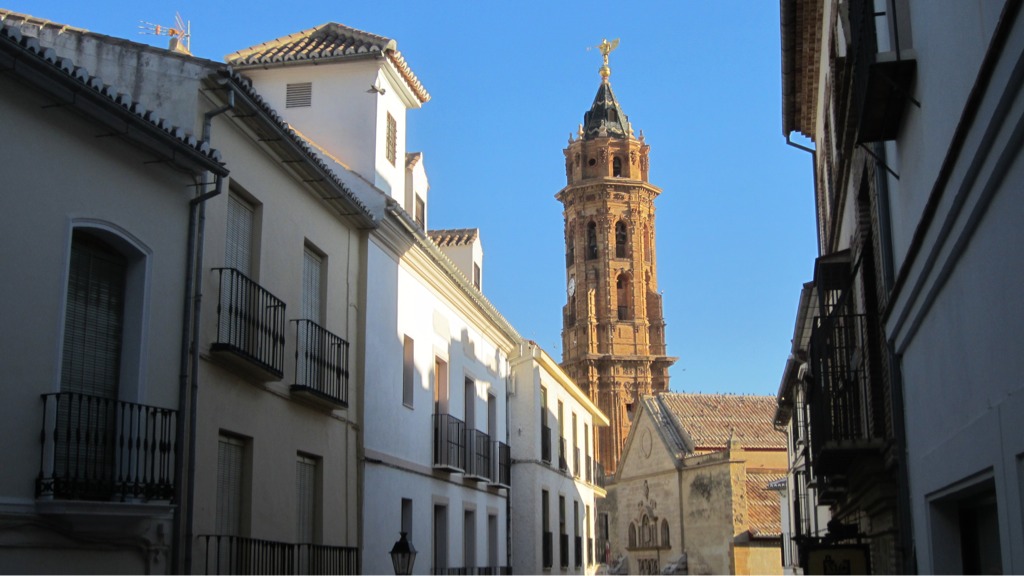
Church Of Sans Sebastian in Antequera
Location:Antequera, Spain
